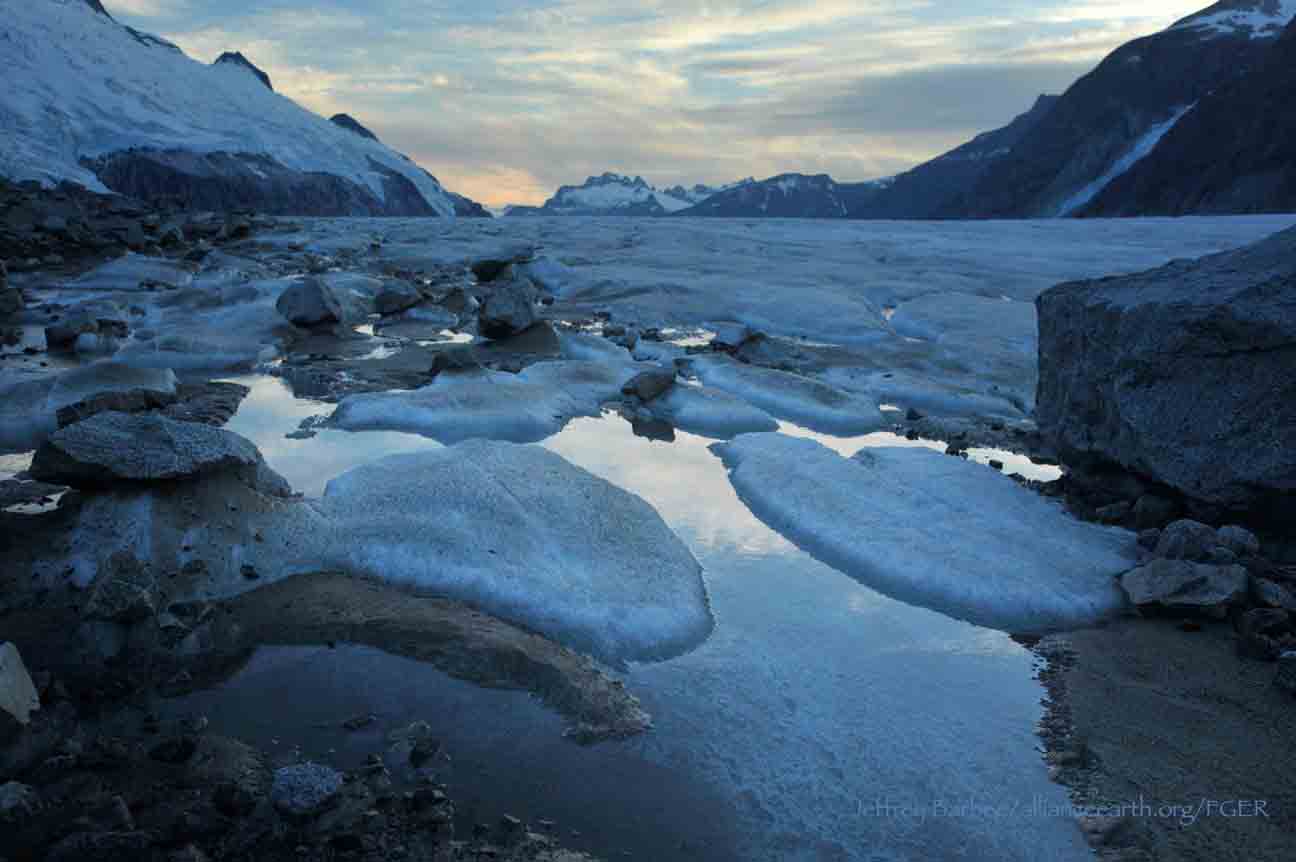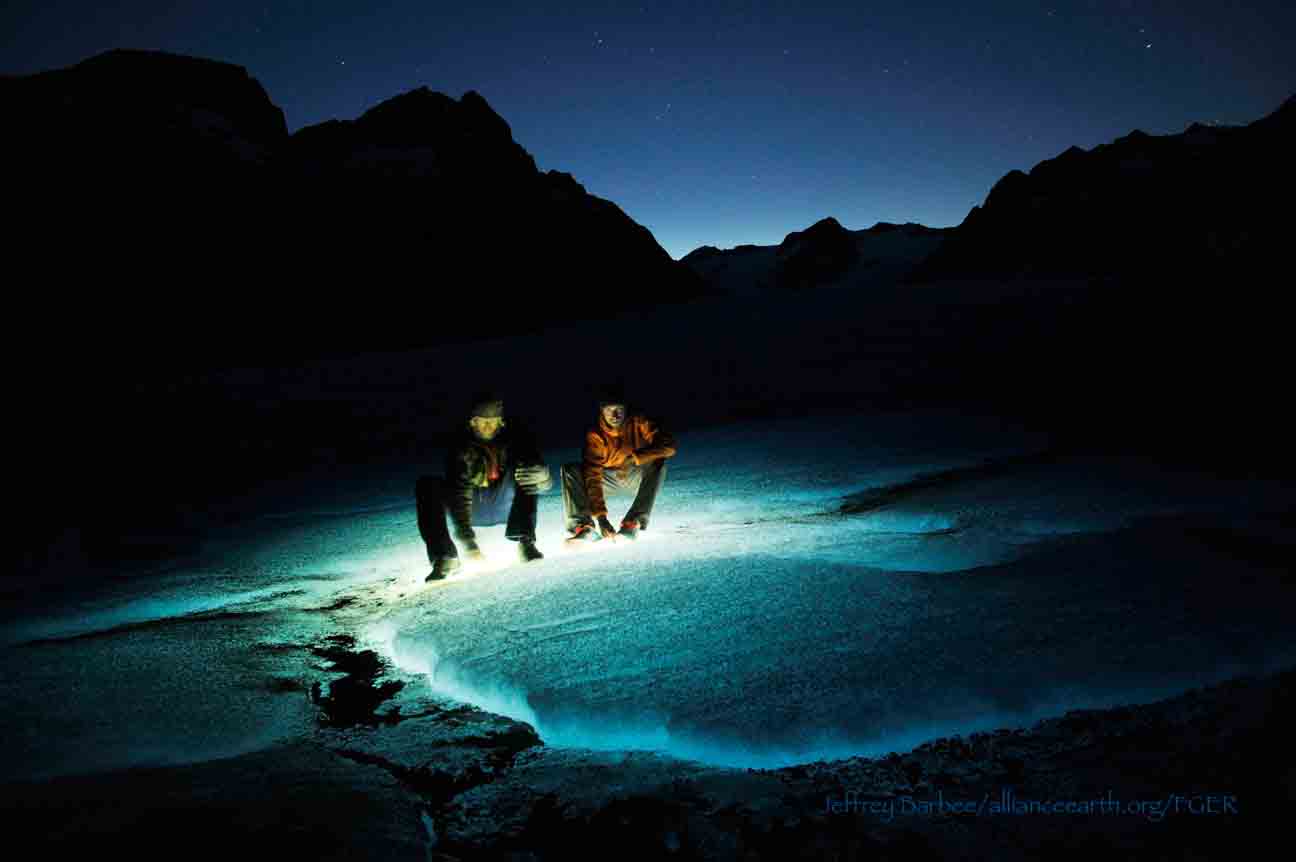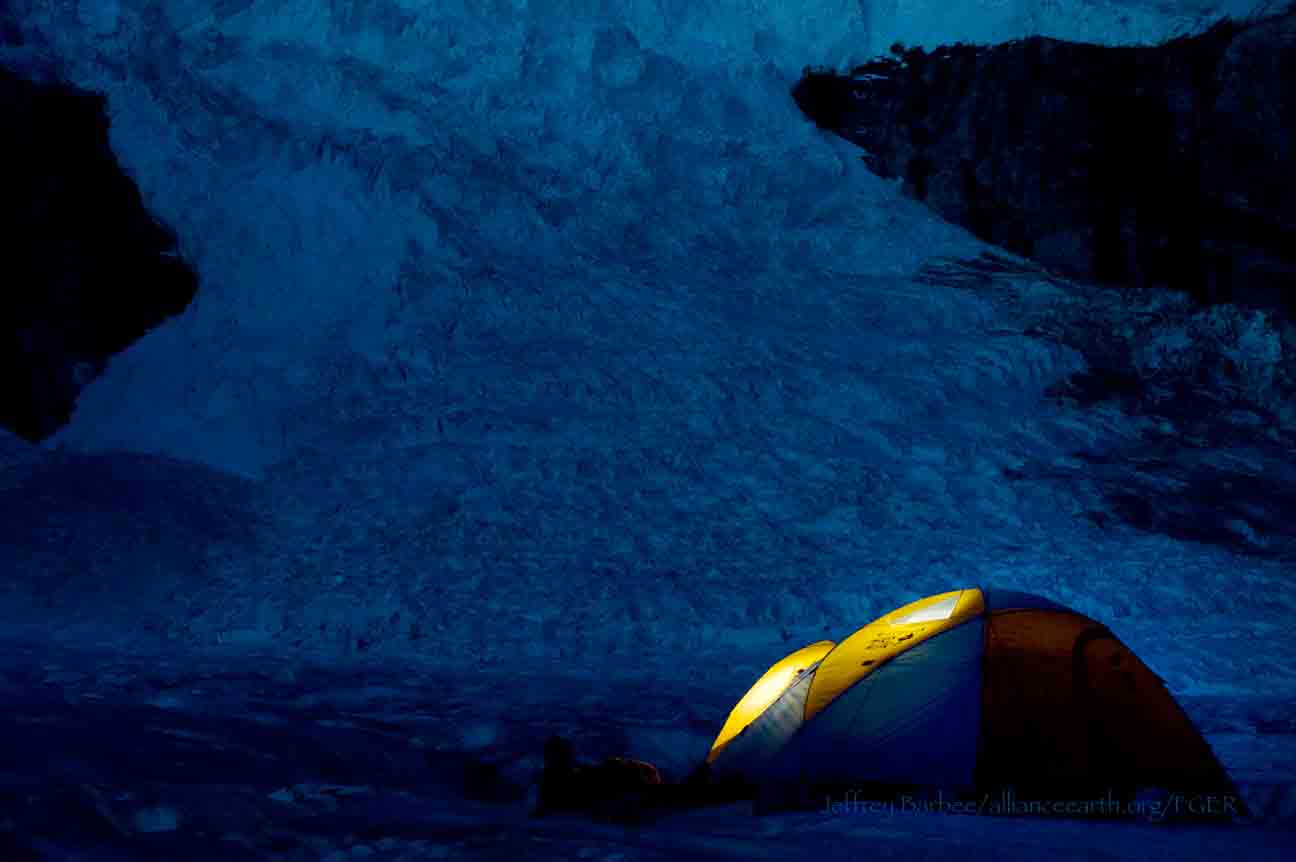By Ben Slavin
Many students and faculty take part in JIRP each summer with the central goal of using the Juneau Icefield as a living and breathing classroom of Earth system science. As a high school JIRPer in 2011, I imagined that I too would take part in the numerous exciting glaciological projects that have been ongoing since 1946. But as I began exploring the mountaintop landscapes, known as “nunataks”, of JIRP’s field camps, I realized that there was a whole other world waiting to be delved into. With the help of dedicated JIRP faculty member and geobotanist, Polly Bass, I gained my first experience in the field of glacial entomology by conducting a general survey of glacier flea (H. nivicola) population characteristics on the Taku Glacier in front of Camp 10.
After completing my project and closing the proverbial book on JIRP 2011, I returned to my senior year of high school assuming that I would only ever return to the Icefield in my countless wonderful memories. A year later, I watched my sister Lindsey complete the program as a high school student and, like so many of the individuals that make JIRP the juggernaut of a program it continues to be, I found myself longing to return to the High Ice. “But how?” I wondered. As I was sitting in a biology class at the University of Miami (FL), where I am pursuing a degree in Neuroscience with the ultimate dream of becoming a medical physician, I remembered the fascinating glacier insects that I had studied two years prior through the lenses of a high school student. Now that I had a college level understanding of the field of biology, I was very hopeful that I might be able to apply this knowledge to the Icefield. After corresponding with Polly, JIRP Director Jeff Kavanaugh, as well as Dr. Sean Schoville at the University of Wisconsin Madison, I was thrilled to be informed that I would have the opportunity to return to JIRP to study insects once again.
Ben Slavin night-collecting N. lituyae. Photo by Jeffrey Kavanaugh.
Instead of glacier fleas, the research project I am taking part in this summer focuses on a species of beetle known as Nebria lituyae. This species is very near and dear to the Kavanaugh family given that Jeff’s father, Dr. Dave Kavanaugh, discovered and named the species and Jeff himself has been collecting it for his father from a young age. The central goal of the project is to determine the amount of microevolution, also known as evolutionary diversification within a species, that is occurring between populations of Nebria lituyae on various nunataks located all over the Icefield. When my friends and family, many of whom are Florida natives, who are much more familiar with sandy beaches than they are with snow and mountains, asked how we were expecting to go about determining microevolution amongst beetles, I cited Darwin’s classic expedition to the Galapagos Islands.
Darwin observed with finches in the Galapagos that being reproductively isolated from their mainland conspecifics caused the island finches to have different physical appearances from finches on the nearby South American continent. Darwin wrote that he believed that the Galapagos finches’ separate gene pool favored individuals who were best suited to surviving the Galapagos’ unique environment over many generations, thus explaining the difference in physical appearance. Essentially, it helps to think of each mountaintop nunatak as its own island, surrounded by a sea of snow and ice instead of water, the target of our collection trips to each of these “Icefield Islands” is not finches but N. lituyae beetles, with the hypothesis that there has been a level of microevolution that has occurred amongst the isolated populations.
In order to be able to study and compare N. lituyae beetle populations, Jeff, Polly, and I (as well as Staff Member Scott McGee, faculty member Gabrielle Gascon, fellow student Pat Englehardt, and Field Safety manager Adam Toolanen), have ventured out on numerous collection trips to strategically-spaced nunataks in which we gather the beetles and humanely preserve them in alcohol-filled collection vials. The biggest challenge of these daytime collection trips thus far has been finding the beetles, which are most active at night when they venture onto the snow bank to feed on other insects that may have died during the day. Given the beetles’ penchant for darkness, daytime collection trips mean that we must turn over (and then carefully replace so as not to disturb the ecosystem) many rocks at each nunatak site we visit. Further adding to the challenge is that we must find a minimum of ten beetles at each nunatak in order to be able to compare them to other nunataks. Some days, we are unable to meet the minimum requirement of ten beetles collected and must don our headlamps for a collecting session after nightfall, when the N. lituyae are much easier to spot. Though the “ten beetle rule”, can lead to some longer days in the field, I personally have been relishing the opportunities to explore cool spots, like the base of "Taku B" behind Camp 10, after dark.
Ben Slavin collecting at Shoehorn Mountain, across the main branch of Taku Glacier from Camp 10. Photo by Jeffrey Kavanaugh.
The reasoning behind a minimum of ten beetles from each nunatak is that we must allow for a certain degree of variability amongst individual beetles that come from the same nunatak. For example, my sisters, Lindsey and Blaire, came from the same parents and grew up in the same environmental conditions I did, but our DNA sequences are not the same as is evidenced by our many physiological differences, such as height.
After explaining the mechanism behind microevolution as well as the collection protocol, my Floridian friends and family are usually eager to learn exactly how we intend to go about determining if microevolution is indeed occurring amongst the N. lituyae populations of the Juneau Icefield. Once we have collected all of our samples for the field season, the beetles will be sent to the lab of Dr. Sean Schoville at the University of Wisconsin Madison. In his lab, Sean will use a specialized technique to surgically remove a part of each of the beetles we collect. Sean will then be able to extract a specific DNA sequence from each beetle which will be compared to the other beetles found on the same nunatak, as well as different nunataks.
We hypothesize that given the beetle populations’ isolation from each other, these DNA sequences will be somewhat different from one another. We are also taking global positioning system (GPS) readings at each of the nunataks where we collect so that we will be able to see if differences in DNA sequence between N. lituyae populations correspond with the distances between the nunataks from which they are collected. Of course, there is also a chance that the DNA sequences of all of the N. lituyae populations will be the same. This would also provide an interesting result as it would suggest that the N. lituyae populations are able to move from nunatak to nunatak in spite of the extremely harsh conditions of the Juneau Icefield.
Regardless of the findings of this riveting project, I have been having the time of my life rediscovering what made the Juneau Icefield Research Program something special for my father, Andrew Slavin (JIRP ’73), who raised me with whimsical stories of this magical place in Alaska. Aside from the amazing landscapes and mostly beautiful weather, I’d have to say that my favorite thing about this program continues to be the people. When I first joined the group, I was equally excited to be reunited with old friends as well as make many new ones, and I most certainly have. I have definitely appreciated how enthusiastic everyone has been about my project - I don’t think a single insect, let alone beetle, has walked through camp without someone letting me know of its whereabouts. The group of students, staff, and faculty who choose to truly take the time to enjoy each others’ presence while doing great research on the Icefield is truly what has made JIRP one of the most special times of my life now not once, but twice!







